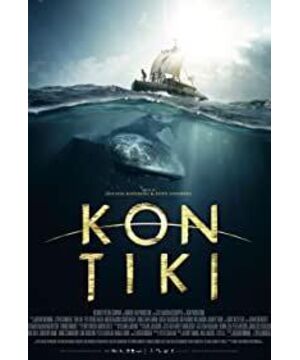Although the protagonist and his party were lucky enough not to die and arrived at the South Island, they could not prove his theory of civil science. Since the end of the Ice Age, the Americas have had no evidence of any contact with Eurasia other than high-latitude Inuit and short-term Viking colonies.
But this can serve as an anthropological case for modern Europe. Heyerdahl's theory of civil sciences is typical of Orientalism, the obscenity of European colonists for prehistoric culture.
Of course, there are also actions, although Heyerdahl firmly believes that he is experimental archaeology, and his raft is indeed tied with ropes, but the ancient navigators obviously did not have a map of the world, nor the surplus supplies of the US military.
This action is actually to show the Faustian spirit of individual Europeans and the paranoid worldview nurtured by Christian culture, which is clearly displayed in the film.
It is also the cultural colonization of the collective unconscious. Europe not only has shrimp but also pig heart, not only to take away the land and sea of the natives, but also to conquer their conceptual world.
In this case. Just trying to reshape the ancestors of the Austronesian ethnic groups, just like the little painter imagined that the Aryans were originally from the British. In this sense, Germany was also a colony, and a certain place in Yunnan was renamed Shangri-La and was actively colonized.
It is a pity that such a pure colonial mind was born at the wrong time, it was simply too late. It was already 1947, the year India became independent, marking the end of the European colonial era.
Therefore, Haierdahl can't stand up to either Kleiwu or Stein's "merit", so he can only pretend to be on the edge of the world... Of course I have to admit that when I pretend to be in this state, I'm convinced.
In Norway, there is also a Swede. The ancestors of Vikings once roamed the coast of Europe and colonized Greenland, but they were completely absent from the modern European colonization movement, not counting the Viking blood of the United Kingdom.
However, when the colonial era ebbs, it is possible to make a new wave in such a high-level and respectable way, making a face for the nation-state and even Western civilization. It is no wonder that it has become the largest investment film in Norwegian history, although only 18.5 million US dollars.
View more about Kon-Tiki reviews











